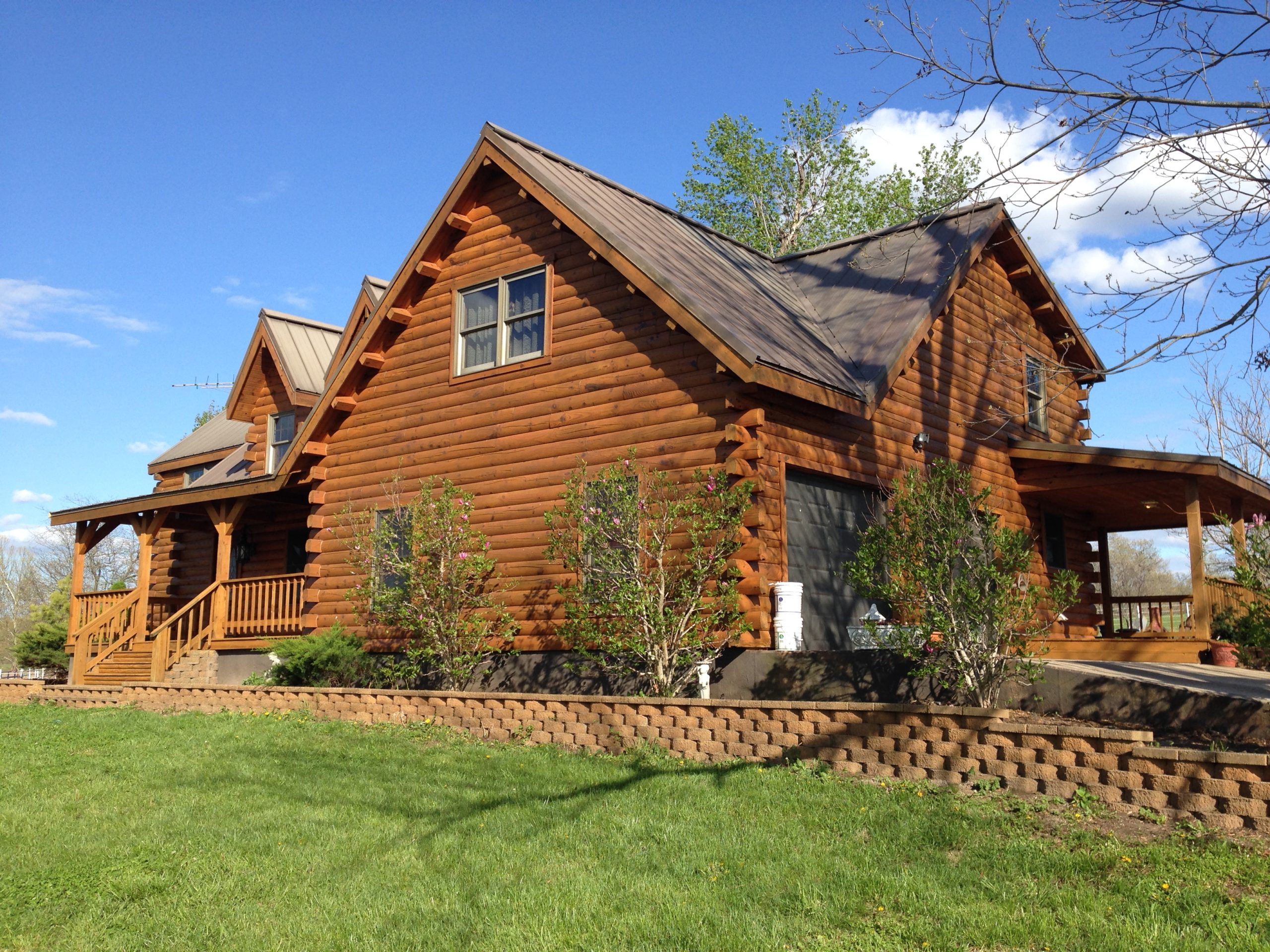
For 888-LOG-GUYS, the year of 2020 started out the way it should! We had the privilege of going back to visit an old friend in Lebanon MO. Our company restored his log home in 2015 (completion of project shown above), and he asked us to come back to repair some logs damaged by rot.
Log homes are almost alive in a sense that they go through changes (e.g. log expansion, log shrinkage, crack formation), and they need regular maintenance and upkeep. Log homes thrive from yearly (even bi-annual) inspections. Here is what you should typically check for:
- dirt, firewood, and landscaping against the house
- well-working water management systems (gutters, downspouts, sprinklers, plumbing)
- signs of insect infestation, log decay or log rot
- black algae, green moss, or mold
- upward facing checks (cracks) that could collect water
- gaps in between logs that allow water or air infiltration
- faded log walls, gray discoloration, or water does not “bead up” on log surface
Additionally, log homes need a fresh application of stain or clear coat (depending on which product you use) every 3-5 years. If a log home owner waits too long to apply the proper preservatives as a maintenance coat, the stain will get to a failure point. That is usually apparent when logs show gray discoloration, peeling stain, or when water does not “bead up” on the log surface. In a failing point situation, log home restoration is required to ensure long-term preservation. This is done by stripping or blasting the stain from the logs, cleaning the logs with a wash and an added preservative treatment, and re-staining (also known as re-sealing) the logs.
Log homes require attention for prevention! And when the unexpected happens, our neighbors like to contact us to resolve their problem!
We are dedicated to healing your log home headaches! Look out for future blog posts discussing in detail how to perform log home maintenance inspections!








